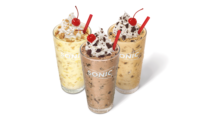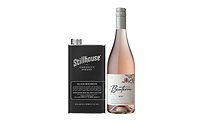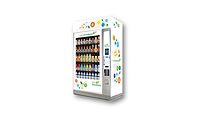Premium offerings, technology drive foodservice
Coffee, iced tea resonate in foodservice




Whether quick-service, fast-casual or a full-service restaurant, consumers are experimenting with new flavors and seeking more premium offerings like specialty coffee, cold-brew coffee and iced tea while dining out. Recognizing that beverages drive profit, foodservice operators have expanded their offerings in the restaurant industry, experts note.
“The restaurant industry continues to see steady growth and is predicted to see annual increases of about 4 percent over the next five years to reach $669 billion by 2021,” states Chicago-based Mintel’s April report titled “American Lifestyles: Finding Common Ground – US.” “However, it’s worth noting that the uncertainty surrounding the immigration policy of the current government administration is of strong concern for every segment, from fast food to fine dining.”
The restaurant industry has seen steady growth since 2011, with an estimated 5.7 percent upsurge in 2016 compared with 2015. However, the report notes that the growth has been hard won in a challenging environment, with innovation being led by fine dining and trickling down to other segments. Yet, this is changing.
“The simultaneous growth of the fast-casual segment and social media has led to food trends coming from every direction,” the report states. “In the past, those with higher levels of disposable income who could afford fine dining would be the first to experience (and spread) new food trends; however, shifts in the foodservice industry and social media exposure have created more mainstream appeal and reach for various food items.”
Among the trends impacting foodservice, David Henkes, advisory group senior principal for Chicago-based Technomic, a Winsight company, cites overall chain slowdown and an uncharacteristic slowdown in fast casual, particularly as former leader, Chipotle, continues to experience poor sales and labor issues related not only to cost but also the availability, retention and training of workers.
“Off-premise is growing, causing operators to rethink delivery and take-out strategies. Coupled with the growth of third-party delivery services, this has been a huge growth area and one that does not benefit beverage as many of these orders do not include a beverage,” he says. “Health and wellness continues to be important, but the definition has changed to include ‘fresh,’ ‘all natural,’ ‘absence of additives’ and is less about calories and fat.”
Because of its health perception and flavor innovation, iced tea continues to resonate along with the on-the-go convenience of packaged beverages. “Cold brew also has taken off,” Henkes says.
He adds that the Top 6 fastest-growing cold beverages within foodservice between 2014 and 2016, albeit from a smaller base, were alternative beverages like coconut water, Hispanic beverages, non-dairy milks like almond milks, energy drinks, iced/frozen/cold-brew coffee, and smoothies.
Stephen Dutton, consumer foodservice analyst at Chicago-based Euromonitor International, adds that expanded beverage menus and quality coffee can be traffic drivers in foodservice while also helping to increase sales of incidental items like breakfast sandwiches.
“Coffee helps drive traffic during the breakfast daypart, while beer and wine may help drive traffic in the evenings. For example, Starbucks experimented with an ‘evenings’ program offering wine and tapas to encourage traffic late in the day,” he says. “Taco Bell launched ‘Cantina,’ a new concept store offering alcoholic beverages such as beer and mixed drinks. McDonald’s new TV ad campaign [that] implies ‘Coke tastes better at McDonald’s’ is an interesting case of a foodservice operator leveraging beverages to promote the brand as well.”
In its December 2016 report titled “Dining Out: A 2017 Look Ahead – US,” Mintel surveyed 1,771 Internet users ages 22 and older who dined out in the past three months. In the report, the market research firm notes that iced tea narrowly eclipsed soft drinks with 32 percent of respondents preferring it compared with 28 percent who reported purchasing soft drinks. “Soft drinks consistently face increased competition in the beverage sector as more drink options emerge. … While hot coffee leads in overall consumer preference compared to cold brew, we see a shift when specifically looking at younger consumers, with a quarter of millennials planning to drink more cold brew in 2017,” the report states.
A surge of innovation
In foodservice, beverages not only are fueling profitability, they also offer an opportunity for operators to be creative.
“Beverages drive profitability [and] are an area that consumers are comfortable with experimentation and new flavors,” Technomic’s Henkes says. “Because of this, we tend to see a lot of innovation in beverage as operators work to stay on trend and drive beverage incidence. Certainly in fast food, the bundled option continues to be effective.”
According to Technomic’s May “U.S. Foodservice Industry” wallchart of 2017 food, non-food and beverages, total restaurants and bars had more than $582 billion in retail sales; limited-service restaurants, including fast-casual and quick service, had nearly $280 billion in sales; and full-service restaurants had $257 billion in sales.
When it comes to which products are resonating, bottled water and niche categories have shown the most growth, says Gary Hemphill, managing director of research for New York-based Beverage Marketing Corporation (BMC), adding that the foodservice segment mirrors the performance of the overall beverage marketplace.
“Foodservice operators are working to give their customers more variety and healthier beverage choices,” he says. “Consumers are opting for more premium beverage brands and this is especially true in on-premise venues. So it certainly makes sense for operators to have some premium and super-premium brands among their offerings — especially when it comes to alcohol. Additionally, foodservice operators can feature unique beverage offerings as a means of distinguishing them from their competition. Seasonal offerings are a great option for venues that want to limit total number of SKUs sold but offer greater variety.”
Euromonitor’s Dutton highlights the fact that consumers are demanding “better” dining occasions and operators increasingly are using technology to make the dining-out experience more convenient and are engaging in the top trends in foodservice.
“Better dining occasions are not necessarily healthier, at least in terms of calories, or even nutritional value, [but] they are better in terms of quality and in terms of the greater dining experience,” Dutton explains. “Consumers want menus that offer more authentic foods, menu offerings that incorporate locally sourced ingredients, fresher ingredients, no GMOs, etc.
“Consumers also expect that the experience in terms of service is better as well,” he continues. “More attractive formats, better music, free Wi-Fi, charging stations, etc., are all important in terms of improving the experience. We’ve seen this play out in fast-food chains in the U.S. McDonald’s, for example, has been improving menu items [to] incorporate better, cleaner ingredients, and updating outlets to incorporate more modern features that consumers want.”
To enhance convenience, foodservice operators are going digital and engaging consumers with technology, Dutton adds. “More consumers spend more time on mobile devices than ever. For restaurants, that means engaging consumers through digital channels to make themselves more accessible,” he says. “Starbucks’ digital strategy works well because a consumer can use the Starbucks app to order ahead, earn points on a rewards program, make payments, etc. The more time a consumer spends on the app, the more they engage with the brand.” BI
Looking for a reprint of this article?
From high-res PDFs to custom plaques, order your copy today!








